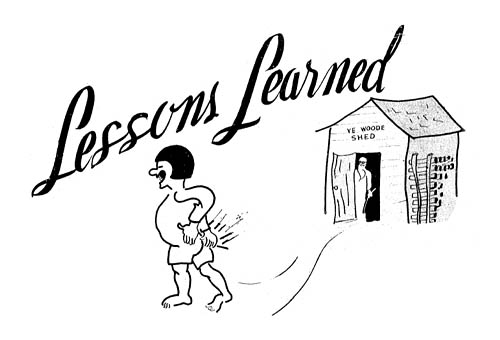“Lessons Learned” by U.S. Eighth Air Force fighters against German flak taken from Light, Intense, and Accurate: U.S. Eighth A.F. Strategic Fighters Versus German Flak in the ETO, Headquarters, 65th Fighter Wing, August 1945. The booklet was the work of Lt. Col. San Souci and Capt. William D. Thurston, assisted by Lt. Col. R. F. Kennedy, Wing A-2.
CHAPTER XI: LESSONS LEARNED
In fighting back at light flak, Enemy No. 1 of our fighters in the Eighth Air Force, we all learned a great deal. Operating as we did in East Anglia in England, a tight little area crowded to capacity with strategic air units, we were ideally situated to analyze, discuss and record what we learned over a considerable period of time. Our military communications net was perhaps the finest that ever existed in any combat zone, and the exchange of information among units left little to be desired.
Some of the lessons that grew out of this particular situation are worth setting down in a list, followed in Chapter XII by recommendations based on our experience:
1. Specialization in Fighters is a Myth. Anyone using fighters in a strategic air force might just as well make up his mind in the beginning that before it’s over his pilots will come up against every type of defense the enemy has. It was an error in the early days in the ETO to assume that high-level escort fighters would not be bothered by light flak. Ultimately we had to prepare to meet it, and we should have started sooner than we did.
2. Photo Interpretation is Reliable in Locating Flak. Our own experience as we went along, and investigations on the ground in Germany after the war, both proved that the flak defenses pin-pointed by photo reconnaissance were over 90% correct.
3. Reconnaissance Must be Continuous. It is obvious that frequent photos of every area reached by the strategic air force are absolutely essential in order to keep abreast of the fluid flak situation.
4. Speed is Essential. Our anti-flak aid to fighters was pretty feeble until corners had been cut and every possible step taken to speed up the flow of information from source to user. Like all other operational intelligence, flak information cannot be permitted to bump along “through channels”.
5. Pilots Need to be “Flak Conscious”. Time and time again it was proved to us in the ETO that in the constantly changing situations confronting our fighter forces, a well-informed pilot who was always thinking about flak possibilities and dangers, was his own best defense.
6. AAA Training is Invaluable in Anti-Flak Work. In virtually every case the officers who made progress in creating a “flak consciousness” among pilots were Coast Artillery trained AAA officers who understood thoroughly the capabilities of flak weapons.
7. Operational Experience Also Made Flak Officers More Influential. Those who went on a few bomber missions and personally experienced German flak, and those who spent time with the pilots learning the fighter problems, had the greatest standing and were listened to with the most respect by the pilots themselves.
8. There is No Cut & Dried Method of Strafing an Airfield, or similar target. Success depends on defeating or outwitting the flak defenses first, and this requires a thorough appraisal of those defenses by the leaders of the mission. As defenses vary, this means it is unwise to develop and count on just one standard style of executing missions of this type.
9. Fighter Flak Problems are so Extremely Different from Those of Bombers as to require special information, special techniques in using the information and specialists at all planning and controlling headquarters to deal particularly with fighter flak problems.
10. The High-Speed, Long-Range Fighter is by Its Very Nature Extremely Vulnerable to Light Flak. This must be taken into consideration at the highest command levels in deciding how far to go in assigning new tasks to strategic fighters. Redesign of coolant, oil and fuel systems with shorter lines and less exposed positions is very desirable.
11. A Coordinated Concentrated Flak Defense can Prevent Fighter Attack, by making them too costly. We could name many a target in Germany against which planned fighter attacks were abandoned after a thorough appraisal of the flak.
12. A Fluid Receding Enemy Situation at Once Results in Unprecedented Concentrations of Flak Guns withdrawn from forward areas, nullifying “normal” flak intelligence information and demanding a prompt change in fighter tactics.











i learned nothing. lol